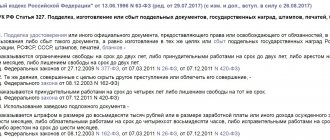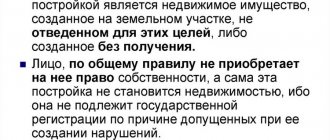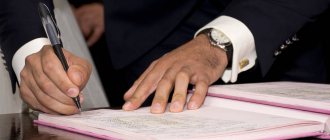Corpus delicti
The issue of banknotes in Russia is one of the exclusive powers of the Central Bank.
This norm is established in Art. 75 of the Constitution. It also says that the ruble is recognized as the monetary unit. The production of counterfeit money and securities is a criminal act throughout the world. At the same time, in foreign countries the rate of counterfeiting is several times higher than in the Russian Federation.
According to statistics, the number of seized counterfeit banknotes is decreasing annually. Thus, in 2008, almost 133 thousand counterfeits were discovered in Russia, and in 2021 - 45.3 thousand.
This progress is primarily due to the constant strengthening of measures to protect banknotes. More and more new printing features are being added, which together become more difficult to counterfeit.
Important! Criminal liability for counterfeiting money and securities is established by Article 186 of the Criminal Code of the Russian Federation. It consists of three parts, two of which qualify the main act. Download for viewing and printing:
Article 75 of the Constitution of the Russian Federation
Article 186 of the Criminal Code of the Russian Federation “Manufacture, storage, transportation or sale of counterfeit money or securities”
Object and subject
The object of the crime is relations related to the normal functioning of the economic system and monetary exchange.
The subject matter is money and securities, as well as some currency values. Money here refers to bank notes and metal coins issued by the Central Bank of the Russian Federation.
Securities are documents that have a special form that certify certain monetary rights of their holder. These include checks, stocks, bonds, etc.
Currency values - foreign money, as well as foreign securities.
Interesting! Responsibility under Art. 186 occurs only if valid money and papers have been counterfeited. The production of signs that have already been withdrawn from circulation is not punishable.
Objective side, forms of committing an act
Part 1 defines the forms of crime, highlighting four types of actions performed with counterfeits:
- manufacturing;
- storage;
- shipping;
- sales
| Action | Characteristic |
| Manufacturing | Full or partial forgery, that is, creating counterfeit items by any means, as well as changing data (number, denomination, series) on existing banknotes, coins and securities |
| Storage | Possession of objects, hiding them in a home or other premises |
| Shipping | Movement of counterfeits by any method and to any distance |
| Sales | The introduction of criminal items into circulation as a result of payment for goods and services, donation, loan, presentation for payment, etc. |
Please note: the article does not list among the possible actions the deliberate acquisition of counterfeit banknotes and securities for the purpose of their further sale.
Such an act is qualified as preparation for a crime (Article 30 and Article 186). Download for viewing and printing: Article 30 of the Criminal Code of the Russian Federation “Preparation for a crime and attempted crime”
Features of the subjective side and the subject
A person who has reached the age of 16 at the time of committing the crime can be held accountable.
But he will be found guilty only if his actions had direct intent and the intention to sell counterfeit bills or papers. The purpose of sales is a prerequisite for qualification under Art. 186. If a person kept a counterfeit without the desire to use it in the future, or manufactured objects for the purposes of experiment or scientific research, liability will not arise.
Methods of protection against counterfeit banknotes: how to identify counterfeits without special equipment
In the Moscow region and in Russia as a whole, the risk of receiving a counterfeit banknote is quite high. Considering that it has still not been possible to completely stop the activities of counterfeiters, residents of the region should know a few simple rules for checking banknotes for authenticity. Read about how counterfeiters most often operate in the Moscow region, how a counterfeit differs from a real banknote, and how to check new banknotes using a mobile phone in the material from the mosreg.ru portal.
“Safe Region” system: how video surveillance works in the Moscow region>>
What banknotes are most often counterfeited?
Euro and ruble banknotes
Source: Photobank of the Moscow region, Alexander Kozhokhin
With the introduction of the five thousandth banknote into circulation in 2012, the number of counterfeit banknotes in denominations of 1000 and 500 rubles decreased significantly. It has become more profitable and safer for counterfeiters to sell banknotes of higher denominations in order to minimize the risk of being caught at the crime scene: instead of 5 times, criminals only need to deceive the cashier once, making only 1 purchase.
According to Article 186 of the Criminal Code of the Russian Federation, the manufacture, storage, transportation or sale of counterfeit money or securities is punishable by forced labor for up to five years or imprisonment for up to eight years. Acts committed on a large scale (over 250 thousand rubles) - imprisonment for up to 12 years, by an organized group - imprisonment for up to 15 years.
What are the requirements for gun owners in the Moscow region>>
How do counterfeiters operate?
New banknotes in denominations of 200 and 2000 rubles
Source: RIAMO
Advances in technology have made it easier for counterfeiters to counterfeit banknotes. If previously former printers or people with a printing education were mainly involved in this prohibited activity, today almost anyone can counterfeit a banknote. That is why it has become more difficult for police to identify the real criminal among the suspects.
As representatives of the Main Directorate of the Ministry of Internal Affairs of Russia for the Moscow Region note, there is a dangerous tendency in the region to involve minors and elderly people in these illegal activities. In order not to arouse suspicion among cashiers, counterfeiters recruit children and pensioners, and they sell counterfeit bills in stores, supermarkets, shopping centers and markets.
To sell banknotes, criminals try to choose retail outlets that are not equipped with special equipment that can detect counterfeits. Such equipment includes banknote counters equipped with a verification system, automatic and manual detectors, sorters and special expert complexes. Available equipment may not provide reliable protection, and expensive systems, the price of which can reach several tens of thousands of dollars, as a rule, are beyond the means of ordinary entrepreneurs and are more often used by banks.
What to do in case of a forest fire in the Moscow region>>
Security elements of ruble banknotes
New 2000 ruble banknotes
Source: RIAMO
Each Russian banknote has a number of security features, and most of them pose particular difficulties for counterfeiters when trying to reproduce them. Certain types of protection cannot be copied in principle - if you deviate from the factory technology and use “gray” equipment, signs of a fake will become visible to the naked eye. Banknotes have the following security features.
Color Variable Paint
If you look at the bill at a right angle, the element has a golden color, when viewed from another angle, it is greenish.
Water marks
Each banknote has two watermarks: a graphic element and the denomination of the bill.
Hidden Rainbow Stripes
If you hold the bill at a distance of 30-50 cm from your eyes and look at it perpendicularly, then this part is perceived as monochromatic. When the banknote is tilted, multi-colored stripes appear.
Increased relief
Lines and dots have increased relief and are easy to feel with your fingertips. Banknotes of different denominations have different ratios of dots and lines, which helps people with visual impairments to determine the denomination of the bill.
Kipp effect
The image appears when you look at the bill at the same angle as the light. The letters “RR” are depicted, which means “Russian Ruble”.
Microperforation
When examining a banknote against a light source, you can see a number that coincides with the denomination of the bill, formed by punctures in the paper. The paper at the microperforation site should not be rough to the touch.
Security thread
A diving security thread, which is a metallized polymer strip, is introduced into the paper. Individual sections of the security thread emerge from the back of the paper in the form of shiny rectangles forming a dotted line. When viewed through light, the security thread looks like a solid dark strip with smooth edges.
Microtext
Using a magnifying glass on the reverse side, you can distinguish the microtext. At the top of the banknotes there is a positive microtext formed by a repeating number indicating the denomination of the banknote. At the bottom of the banknotes there is negative microtext in the form of dark stripes with light repeating text “CBR” and the denomination of the bill.
Security fibers
The paper from which banknotes are made contains randomly arranged red, light green, two-color and gray security fibers. Two-color security fibers appear purple in appearance, but when viewed through a magnifying glass, they show alternating red and blue areas.
Experts advise making sure that there are at least three security elements in order to verify the authenticity of the banknote.
It is also necessary to pay attention that on some counterfeit banknotes, when rubbed, the paint that covers the protective metallized thread peels off, and sometimes the banknote completely delaminates, since it is glued together from two parts. In addition, some fakes are poorly painted, so if you run a finger dipped in water over their surface, the image may become blurred.
Checking using a smartphone
Using the Bank of Russia Banknotes application, you can check some security features of banknotes in denominations of 1000 and 5000 rubles of the 2010 modification and 2000 rubles by scanning them on both sides.
The mobile application contains information about all Bank of Russia banknotes in circulation and their security features. It will help users understand exactly where the watermarks, increased relief, kipp effects are located and what they look like.
The next application for determining the authenticity of banknotes is “Banknotes 2017”. It was developed by Gosznak in 2021, when banknotes of 200 and 2000 rubles were introduced into circulation.
The application scans bills using a smartphone camera, analyzes the image, shows additional animation of the symbols of the cities that are depicted on the money, and evaluates the presence of certain signs of authenticity.
In order to check a banknote in the application, you need to scan it on both sides.
Both applications are free. They can be downloaded from the App Store or Google Play.
Rules for transporting children in the Moscow region: car seats and requirements for buses>>
What safety rules must be followed?
Banknotes of Russian rubles.
Source: Photobank of the Moscow region
To protect yourself from counterfeit money, it is recommended to follow certain security rules:
- if you plan to buy goods by hand, then it is best to make appointments in crowded places or in places within the visibility range of video cameras, so that in case of fraud the criminal can be identified;
- when carrying out large transactions with cash payments, you need to check the received banknotes in all possible ways;
- it is better to pay for purchases with plastic cards so as not to receive counterfeit change;
- You should be especially vigilant when making purchases in markets, in small trading stalls and in street exchange offices, since most often these are the points chosen by counterfeiters to sell counterfeits.
Fire regulations in the Moscow region - requirements for land owners>>
Delineation with adjacent compounds
Making fakes is a complex and costly process that requires a large number of skills and abilities.
It can be produced in different ways, for example, using color printing, cutting off parts and replacing them with new ones, making changes through additional drawings, etc. In this case, the criminal has the goal of selling the counterfeit, that is, putting it into circulation. To achieve this, maximum resemblance of the manufactured item to the original is achieved. An ordinary person who does not have special skills or equipment will not be able to distinguish between them.
Another case is the creation of banknotes or securities, the counterfeitness of which can be detected by simple careful examination, without attempting to copy the entire original. If such an act is accompanied by a desire to deceive a specific person or group of persons, then it falls under the article not on counterfeiting, but on fraud (Article 159).
Download for viewing and printing:
Article 159 of the Criminal Code of the Russian Federation “Fraud”
How to distinguish fakes from real ones?
The Russian ruble is one of the most protected from counterfeiting, as is clearly evidenced by statistics on the ratio of counterfeits to original banknotes in circulation. However, in order not to fall into the small percentage of deceived victims of counterfeiters, you should pay attention to the following obvious signs of counterfeiting:
- the images on the front and back of the banknote partially or completely do not match;
- no watermarks and/or security fibers;
- there are distortions in the color of the images, and when the bills are folded, white stripes or other forms of traces of paint shedding appear on the fold line;
- several banknotes of the same denomination are provided with the same numbers and series;
- inconsistency of individual design elements (background grid, sockets located on a white background, etc.);
- small text on the banknote is impossible to read;
- Halftones are not represented during the transition of colors; the pattern has a dotted structure.
You know how much they pay for counterfeiting and how to protect yourself from crime, let's look at some cases from judicial practice.
Qualifying signs and punishment
Parts 2 and 3 contain special features that aggravate the act and, as a result, the punishment.
The first qualifying feature concerns the total value of money and securities produced, stored, transported or sold: its size must be large. This concept is constantly changing, at the moment the amount must exceed two million two hundred and fifty thousand rubles.
The third part provides for liability for the commission of a crime by an organized group.
| Part | Punishment |
| 1 | Forced labor for up to five years or imprisonment for up to eight years with or without payment of a fine of up to one million rubles (or the amount of wages for a period of up to five years) |
| 2 | Imprisonment for up to twelve years, additionally the following may be imposed: a fine (up to a million or in the amount of income for a period of up to five years), as well as restriction of freedom for up to one year |
| 3 | Imprisonment for up to fifteen years, additionally: a fine (up to one million rubles or in the amount of the convicted person’s income for a period of up to five years) and imprisonment for up to two years |
Important! If a person found a banknote or obtained it in another way, learned about its counterfeit later, but still tried to sell it, then he will also be held liable under Art. 186.
Arbitrage practice
Example 1. In 2010, in St. Petersburg, a resident of the northern capital independently produced a counterfeit 1000 ruble bill on an inkjet printer and paid for her bus fare, receiving change from the conductor, after which she was detained at the scene of the crime. The Vyborg District Court of St. Petersburg found the citizen guilty under Part 1 of Article 186 of the Criminal Code of the Russian Federation and sentenced her to 5 years without a fine, which were replaced due to her state of health and sincere confession by 3 years of probation with a ban on leaving her place of residence.
Example 2. On October 10, 2015, a resident of Volgograd, V.S. Turnaev. found a banknote with a face value of 5,000 rubles on the road, with which he decided to buy groceries at a shopping pavilion, which he was unable to do, since the cashier checked the bill and returned it after checking it with an ultraviolet machine, informing him that it was counterfeit. Knowing that this banknote is counterfeit, citizen V.S. Turnaev. tried to re-sell it in a supermarket, where he was detained by law enforcement officers on a signal from the cashier, who identified the counterfeit. Having been found guilty under Part 1 of Article 186 of the Criminal Code of the Russian Federation, V.S. Turnaev was sentenced to 5 months of forced labor, against which he was credited for the time he spent in a pretrial detention center during the investigation. Thus, the convict was released in the courtroom.
The video below contains cases from judicial practice, as well as many other interesting facts regarding counterfeiting:
Features of crime investigation
Counterfeiting of money and securities is a problematic crime for investigation, since it is very difficult to determine the source of origin of items that have gone into circulation.
Large bills, if special equipment is available, are checked by cashiers immediately, but small bills can go a long way before their counterfeitness is detected.
If the bill was not discovered immediately, then law enforcement agencies interview all possible witnesses, and also examine nearby places where cash payments are made.
Whenever possible, CCTV footage is confiscated and persons previously convicted of committing similar crimes are provided for identification.
The most important part of the investigation is conducting examinations, including:
- dactyloscopic (fingerprinting);
- technical and forensic (determining methods for making counterfeits and used equipment);
- physical and chemical (establishing the composition of paper, paints, metals);
- handwriting examination (if there are signatures on papers).
After they are carried out, the approximate origin of the item is established, as well as the characteristics of the person who committed the crime, his skills and abilities, and mastery of equipment.
If a person was detained at the time of the sale, then an inspection of his home, place of work and other premises visited by him, interrogation of the suspect and witnesses, and confrontations between them are carried out.
Article for counterfeiting
Please note:
Responsibility for forging signatures on documents occurs only when imitating the signature of official documents, certificates, and awards. You can read more about penalties for falsifying documents here
Counterfeiting is a process that is divided into several components:
- production of coins, banknotes, securities for the purpose of their sale;
- storage and transportation of counterfeit means of payment;
- sale of manufactured counterfeits.
This crime is considered by the Criminal Code of the Russian Federation in Article 186.
It is worth noting that if counterfeiting money is carried out not with the purpose of introducing it into circulation, but with the intention of misleading a limited number of citizens, then such a crime is classified as fraud. By the way, about where to report fraud - read here https://lexconsult.online/7342-v-kakie-instantsii-obrashhatsya-po-faktu-moshennichestva





